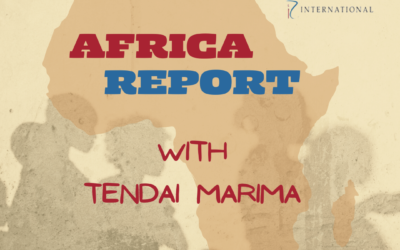Ebrahim Moosa – Radio Islam News | 09 August 2016
The Olympics are characterised by the 5 colourful circles that make up its official logo. However, reporting on the Rio games thus far have found curiosity peaking around circles of another kind.
“Why are so many Olympians covered in large red circles?” the BBC asked on Monday.
“What are they, and why is everyone suddenly going dotty over them?”
The broadcaster was referring to a number of athletes – particularly swimmers and gymnasts – who had been photographed with large red circles or ‘bruises’ on their skin.
“The mark of an Olympic athlete, at least at Rio 2016,” it reported, “seems to be a scattering of perfectly round bruises. Swimmers and gymnasts, particularly from Team USA, are among those seen sporting the mysterious dots.”
Whilst many Westerners may be bewildered by the sight of these circles, for Easterners and most Muslims, the markings are instantly identifiable as evidence of a treatment known as cupping.
Using glass or plastic cups, a mechanism of suction in cupping promotes blood flow, and purges dirty blood, in the process leaving dark red spots, which typically last for a few days.
Olympic gold medalist Michael Phelps on Sunday was pictured with the dark circles on his shoulder, prior to his participation in the pool.
“It’s the result of a recovery method Phelps and other U.S. athletes, including gymnasts, use to relieve tension in their muscles,” reported USA TODAY.
Athletes say they are using it to ease aches and pains, and to help with recovery from the physical toil of constant training and competing.
Despite its Eastern origins, the technique has proven to be highly popular among members of the USA Track & Field team, according to Ralph Reiff, a sports performance expert who said he has worked with more than 100 members of the current USA Olympic team.
Reiff, executive director of the St. Vincent Sports Performance in Indianapolis, told USA TODAY that cupping advocates include LaShawn Merritt, who has recorded the top time in the world this year in the 400 meters.
“It’s very much common in our practice,’’ Reiff told USA TODAY Sports. “We’ve found it to be an effective alternative therapy to add to our toolkit of resources.’’
The expert described cupping as an ethical and safe technique whose benefits included speedier recovery and improved muscle movement.
“It really increases motion and gets rid of what we call subtle tissue lesions within certain areas of the body.’’
From a range of other therapies available, US gymnast Alex Naddour testified that cupping was “better than any money I’ve spent on anything else”.
“That’s been the secret that I have had through this year that keeps me healthy,” Naddour said.
“It’s the best thing that I’ve ever had…It has saved me from a lot of pain.”
Many fellow US gymnasts have bought into the therapy, with some even opting for a do-it-yourself approach, applying the cups themselves and creating suction with a pump.
“You’re like, ‘OK, I’m sore here,’” said team captain Chris Brooks. “Throw a cup on, and your roommate will help you or you can do it yourself.”
Sunnah
In Islam, cupping is considered a highly recommended practice that finds its merit in commendation by the Prophet Muhammad SAW himself.
Cupping is known as Hijaamah derived from the Arabic root al-hajm, which means “sucking”.
It has two components – dry and wet cupping. Dry cupping relies solely on the suction of cups to stimulate blood flow; whilst wet cupping, which usually follows the dry, sees to the removal of impure blood, also through suction, but with the aid of minute slits on the surface of the skin.
Ibn ‘Abbaas (may Allaah be pleased with them both) reported that the Prophet (peace and blessings of Allaah be upon him) said: “Healing is to be found in three things: drinking honey, the knife of the cupper, and cauterization of fire.” (Bukhari).
According to a hadeeth narrated by Jaabir (may Allaah be pleased with him), the Prophet (peace and blessings of Allaah be upon him) said: “If there is any good in your medical treatments, it is in the knife of the cupper, drinking honey, or cauterization with fire, as appropriate to the cause of the illness, but I would not like to be cauterized.” (Bukhari)
According to a hadeeth narrated by Anas ibn Maalik, may Allaah be pleased with him, the Prophet (peace and blessings of Allaah be upon him) said: “I did not pass by any group on the night when I was taken on the Night Journey (Isra’), but they said to me, ‘O Muhammad, tell your ummah to do cupping.’” (Ibn Maajah).
Islamic teachings specify certain rules for cupping which include a preference for days when the therapy can and cannot be administered.
Abu Hurayrah (may Allaah be pleased with him) reported that the Prophet (peace and blessings of Allaah be upon him) said: “Whoever is treated with cupping on the seventeenth, nineteenth or twenty first, will be healed from all diseases.” (Abu Dawood).
On the other hand, it is ordained that cupping should not be carried out on a Wednesday.
It is essential that cupping is performed correctly and that the therapy be administered by one who is trained in the science. Instruments used should be properly cleaned and sterilized.







0 Comments